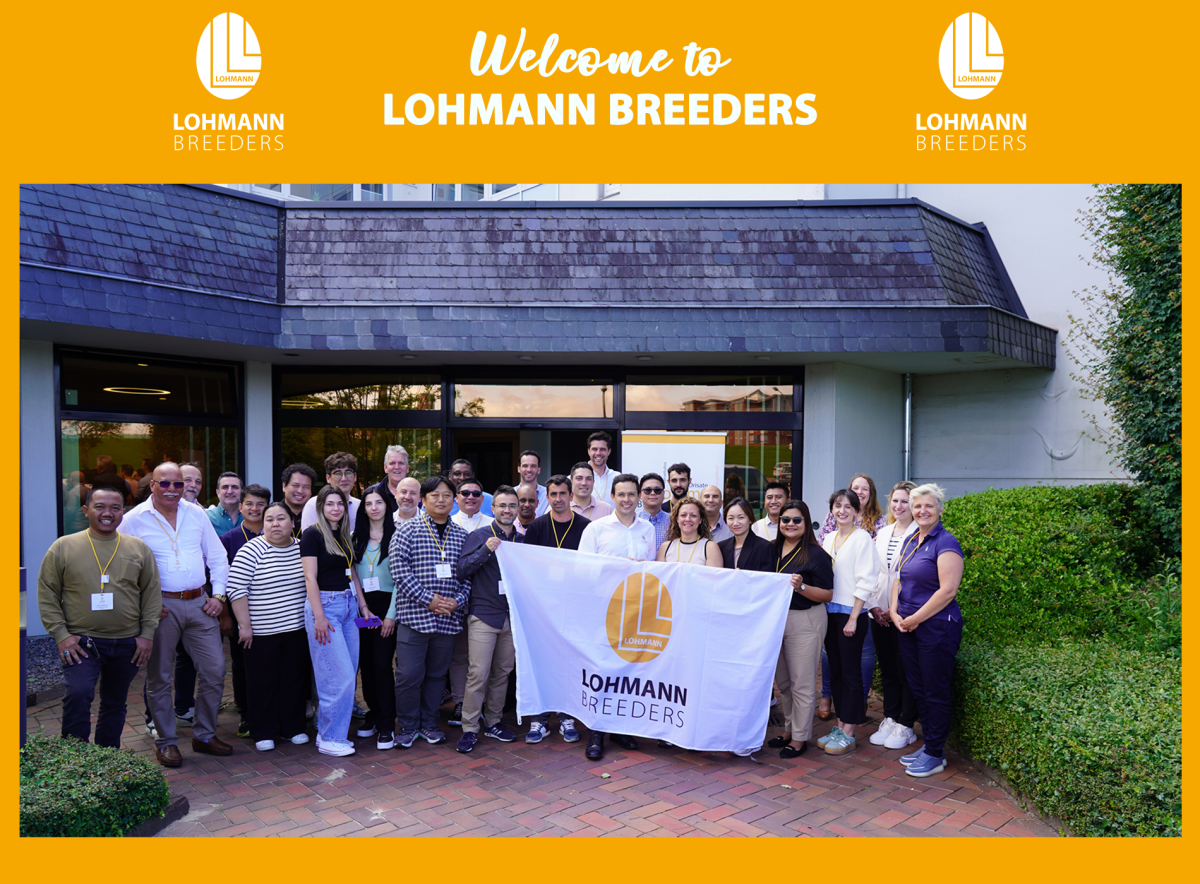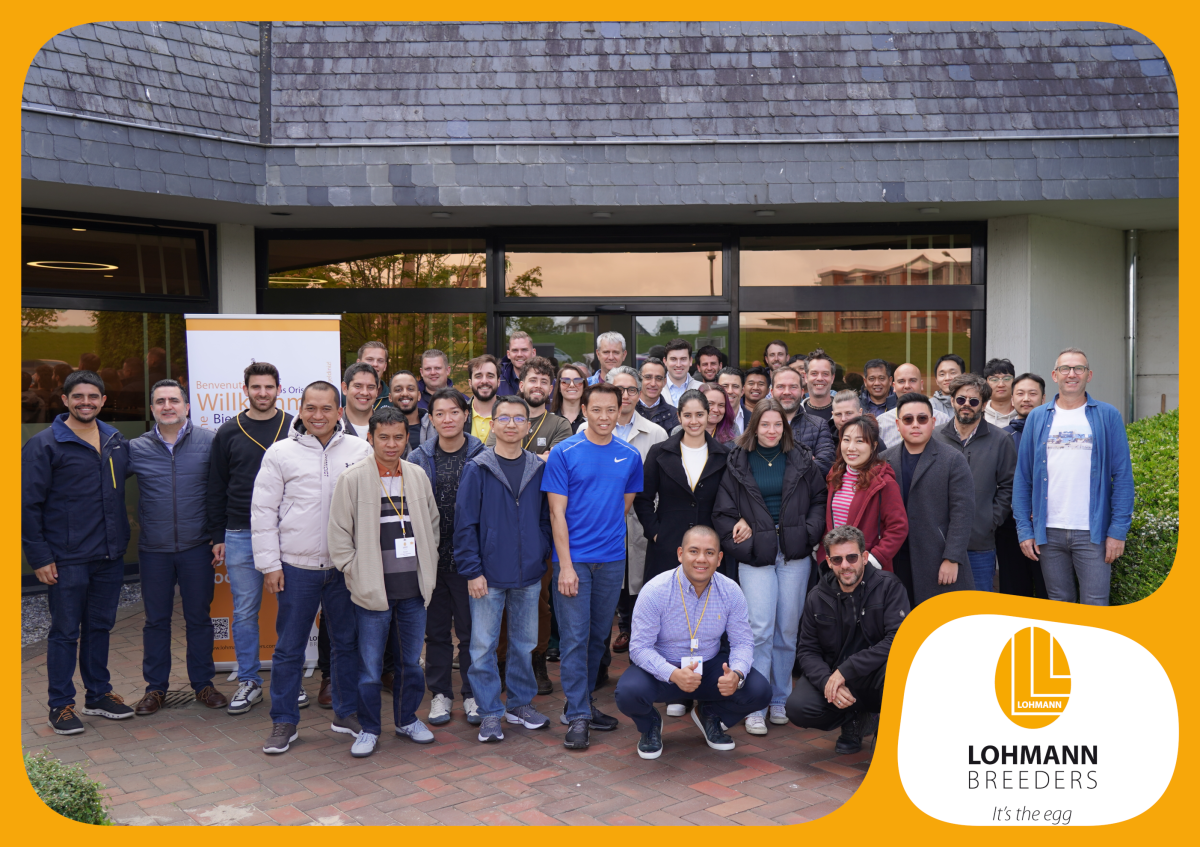Enrichment plays a vital role in promoting the overall well-being
of laying hens.
Enrichment is the process of improving the quality of an animal’s life by adding stimuli that replicate natural conditions. Chicks raised with a variety of objects exhibit increased mobility, feeding, and vocalization in open field tests. For laying hens, behavioral enrichment is essential to ensure their optimal well-being.
By understanding what stimulates hens and their specific needs, we can create environments that promote their cognitive and behavioral development, reduce stress, alleviate boredom, and promote positive movement behavior.
Enrichment should be viewed as an integral part of the care and management of laying hens, contributing to their physical, mental, and emotional health. We can also use it to help resolve negative behavioral issues.
Merely providing enrichment without a strategic approach may not yield the desired results. To make the most of enrichment for laying hens, it is essential to consider various factors and implement a well thought-out plan.
LOHMANN have developed the RISE concept to categorize different types of enrichment. This concept helps identify enrichments that provide additional benefits to the hens, appeal to their sensory capabilities, encourage positive social circles, and promote movement and feelings of security.
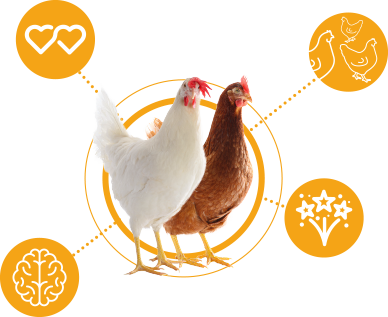
Reward enrichment involves providing items that give additional benefits to the hens. Examples of reward enrichments include alfalfa, grit, and pecking stones. These items not only provide mental and physical stimulation but also contribute to the overall well-being of the hens.
Interesting enrichments appeal to the sensory capabilities of the hens. This can include items such as ropes, plastic bottles, colored objects, and moveable items. These enrichments stimulate the hens’ senses and provide them with opportunities for exploration and play.
Social enrichment focuses on providing items that encourage positive social circles among the hens. This can include the use of buckets or whole straw bales, which create spaces for hens to interact and engage in natural social behaviors.
External enrichments aim to encourage movement and provide feelings of security to the hens. This can include the use of shades, trailers, trees, and even other animals. These enrichments create a dynamic environment that encourages hens to explore, move around, and feel safe in their surroundings.
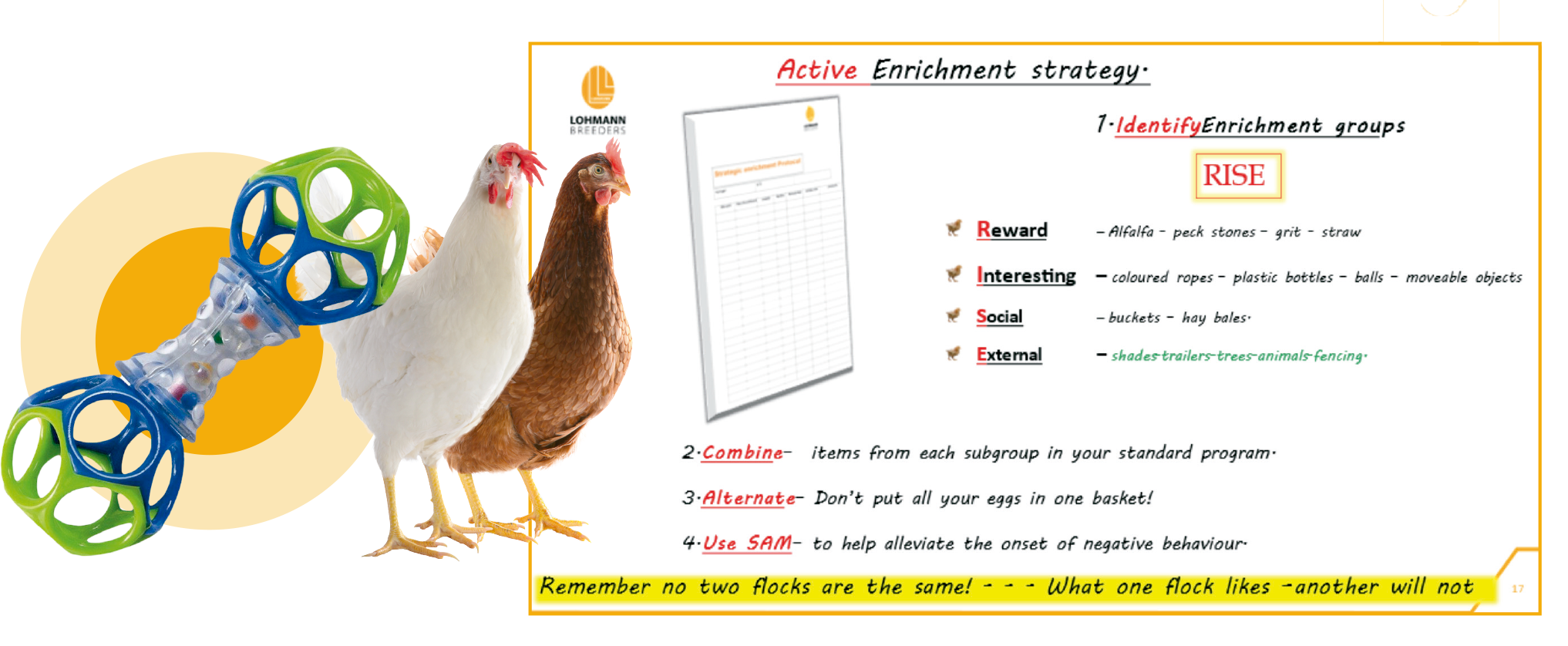
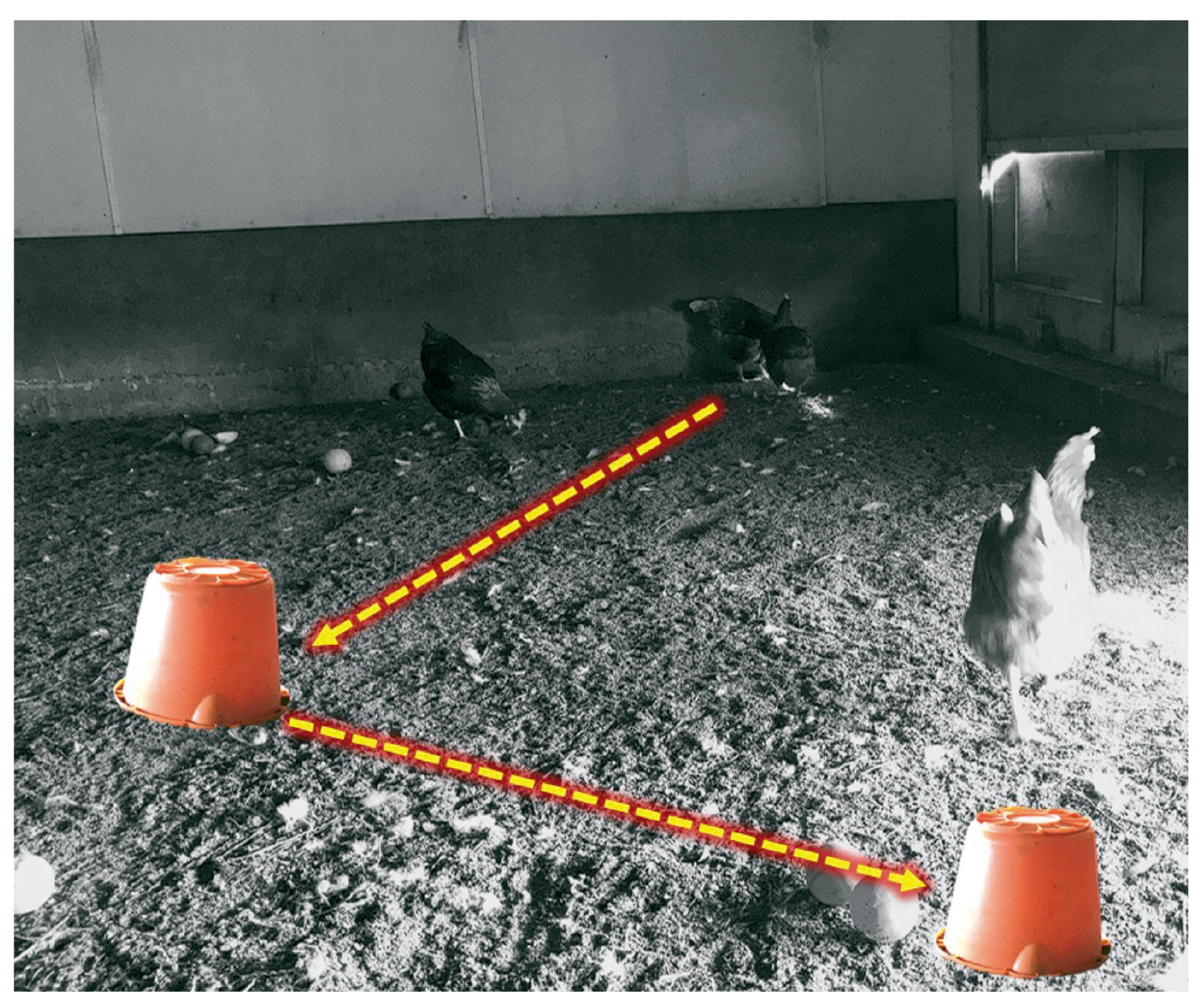
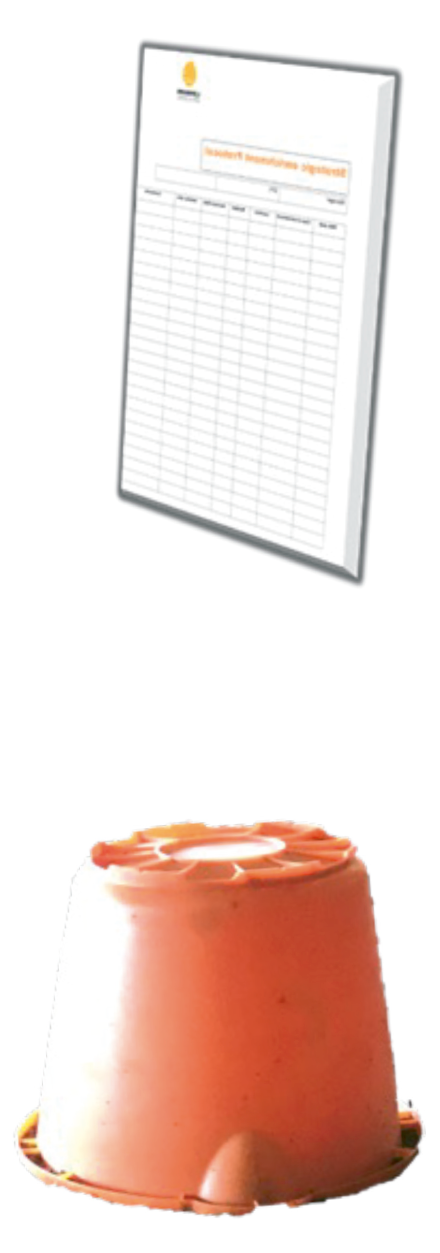
Regular monitoring and evaluation of the impact of enrichments on the hens is essential. This can be done through behavioral observations, assessing physical indicators, and utilization of monitoring sheets such as those supplied by Lohmann.
Enrichments don’t have to be expensive to be effective. In fact, often the simplest and most readily available items can provide the most benefits to laying hens.
The strategic use of enrichment is essential for the welfare of modern laying hens. By understanding the benefits of enrichment and implementing a well-thought-out plan, we can provide hens with an environment that stimulates their senses, promotes positive social interactions, encourages movement, and enhances their overall well-being.

Enrichment is the process of improving the quality of an animal’s life by adding stimuli that replicate natural conditions. Chicks raised with a variety of objects exhibit increased mobility, feeding, and vocalization in open field tests. For laying hens, behavioral enrichment is essential to ensure their optimal well-being.
By understanding what stimulates hens and their specific needs, we can create environments that promote their cognitive and behavioral development, reduce stress, alleviate boredom, and promote positive movement behavior.
Enrichment should be viewed as an integral part of the care and management of laying hens, contributing to their physical, mental, and emotional health. We can also use it to help resolve negative behavioral issues.
Strategic Use of Enrichment
Merely providing enrichment without a strategic approach may not yield the desired results. To make the most of enrichment for laying hens, it is essential to consider various factors and implement a well thought-out plan.
Simply checking off boxes is not enough. To truly benefit the hens, we need to look a little deeper into what we use, when we use it and how we use it. Interest in an object wane’s after about 10 days, so we must ask ourselves if we are really being effective with our current enrichment practice.
The RISE Concept
LOHMANN have developed the RISE concept to categorize different types of enrichment. This concept helps identify enrichments that provide additional benefits to the hens, appeal to their sensory capabilities, encourage positive social circles, and promote movement and feelings of security.
By understanding these categories, we can strategically select and implement enrichments that cater to the specific needs of laying hens.

Reward Enrichment
Reward enrichment involves providing items that give additional benefits to the hens. Examples of reward enrichments include alfalfa, grit, and pecking stones. These items not only provide mental and physical stimulation but also contribute to the overall well-being of the hens.
By strategically incorporating reward enrichments into their environment, we can enhance their cognitive behavior and help them cope with stress more effectively.
Interesting Enrichment
Interesting enrichments appeal to the sensory capabilities of the hens. This can include items such as ropes, plastic bottles, colored objects, and moveable items. These enrichments stimulate the hens’ senses and provide them with opportunities for exploration and play.
By strategically introducing interesting enrichments, we can alleviate boredom and promote mental engagement and physical activity among laying hens.
Social Enrichment
Social enrichment focuses on providing items that encourage positive social circles among the hens. This can include the use of buckets or whole straw bales, which create spaces for hens to interact and engage in natural social behaviors.
By strategically incorporating social enrichments into their environment, we can enhance the hens’ social interactions and overall well-being.
External Enrichment
External enrichments aim to encourage movement and provide feelings of security to the hens. This can include the use of shades, trailers, trees, and even other animals. These enrichments create a dynamic environment that encourages hens to explore, move around, and feel safe in their surroundings.
By strategically placing external enrichments, we can promote positive movement behavior and minimize unwanted behaviors.

Implementing Strategic Enrichment
Implementing strategic enrichment requires careful planning and consideration of the hens’ needs and preferences. A simple way to evaluate this is to ask yourself four simple questions:Why do we want to place enrichment at this particular time?
When should we use it and for how long?
What category should we use to get the best results?
Where should we place it?


Monitoring and Evaluation
Regular monitoring and evaluation of the impact of enrichments on the hens is essential. This can be done through behavioral observations, assessing physical indicators, and utilization of monitoring sheets such as those supplied by Lohmann.
By closely monitoring the effects of enrichments, adjustments can be made to ensure optimal outcomes and continuously enhance the hens’ welfare.
Cost-Effectivness
Enrichments don’t have to be expensive to be effective. In fact, often the simplest and most readily available items can provide the most benefits to laying hens.
By utilizing resources that are already present, such as recycled materials or natural elements, we can provide enrichments that are both cost-effective and beneficial to the hens.
Conclusion
The strategic use of enrichment is essential for the welfare of modern laying hens. By understanding the benefits of enrichment and implementing a well-thought-out plan, we can provide hens with an environment that stimulates their senses, promotes positive social interactions, encourages movement, and enhances their overall well-being.
By closely monitoring the effects of enrichments, adjustments can be made to ensure optimal outcomes and continuously enhance the hens’ welfare.
By prioritizing the strategic use of enrichment, we can create a better quality of life for our laying hens and contribute to sustainable and ethical egg production.





